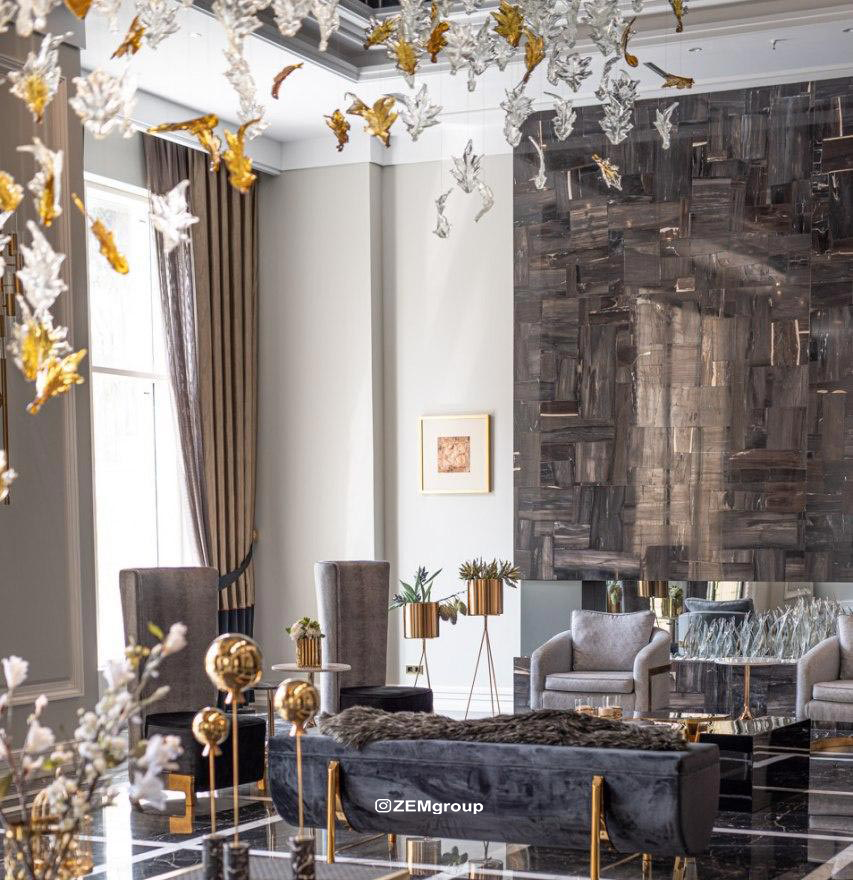A Complete Guide to Interior Lighting Design: Principles, Types, and Common Mistakes
Interior lighting is not just about visibility—it’s one of the most powerful tools in interior design. Proper lighting enhances aesthetics, creates mood, improves functionality, and even impacts mental well-being. In this comprehensive guide, we’ll explore the fundamentals of interior lighting systems, the difference between direct and indirect lighting, how light affects space and behavior, and common lighting design mistakes to avoid.

The Importance of a Thoughtful Lighting Plan
Every successful interior begins with a solid lighting strategy. Lighting isn’t something to “add later”—it should be integrated from the early stages of planning. A well-designed lighting system defines zones, highlights architectural features, supports activities, and adds depth and dimension to the space.
Lighting is also closely linked to the psychological and emotional comfort of residents. Warm or cool light tones, intensity levels, and shadow patterns all influence how we feel and function in a room. The right lighting can transform a cold and uninspiring space into one that feels welcoming and alive.
Types of Interior Lighting Systems
Interior lighting is typically divided into three main layers, each serving a distinct purpose:
1. Ambient Lighting (General Lighting)
This is the primary source of light in a room. It provides uniform illumination that allows you to see and move around safely. Common ambient light sources include ceiling-mounted fixtures, recessed lights, and chandeliers.
2. Task Lighting
Task lighting is more focused and designed for specific activities like reading, cooking, working, or grooming. Examples include desk lamps, under-cabinet lights in kitchens, and vanity lights in bathrooms.
3. Accent Lighting (Decorative or Highlight Lighting)
Accent lighting adds drama, focus, and visual interest. It draws attention to artwork, architectural details, or textured surfaces. Examples include wall sconces, spotlights, picture lights, or LED strips inside niches.
A balanced lighting design often incorporates all three layers to create a rich, functional, and visually dynamic space.
Direct vs. Indirect Lighting: What’s the Difference?
Understanding the distinction between direct and indirect lighting helps you achieve your design goals:
-
Direct Lighting shines straight onto a surface or area. It’s ideal for task areas such as kitchen counters, desks, or reading nooks. However, if not controlled, it can create harsh shadows and glare.
-
Indirect Lighting reflects off surfaces (walls, ceilings) to provide a softer, more diffused glow. It creates a warm and inviting atmosphere, perfect for living rooms, bedrooms, or dining areas where comfort and relaxation are priorities.
Tip: Combining both types in different parts of a room allows for better control of ambiance and usability.
How Lighting Affects Space and Perception
Lighting is a key tool in shaping how a space feels and is perceived. Here are some of the effects:
-
Bright, cool light makes spaces feel more open, energetic, and functional—great for kitchens, offices, or bathrooms.
-
Warm, dim light creates a cozy, calming, and intimate environment—ideal for bedrooms or living rooms.
-
Vertical lighting emphasizes height and can make ceilings appear taller.
-
Horizontal lighting spreads light across surfaces and makes spaces appear wider.
Light can also influence the perceived color of walls and furniture. A paint color under natural daylight may look completely different under warm artificial lighting.

Common Lighting Design Mistakes to Avoid
Even with beautiful furniture and perfect color schemes, poor lighting can ruin the look and feel of a space. Here are some typical mistakes to steer clear of:
• Relying on a Single Light Source
Using only one ceiling fixture leads to flat and lifeless lighting. Always combine ambient, task, and accent lighting.
• Ignoring Dimmers
Not installing dimmers limits your ability to control the mood. Dimmers are inexpensive and offer flexible lighting for different times of day and activities.
• Poor Placement of Fixtures
Incorrect placement can create shadows, glare, or under lit areas. Always consider furniture layout and user movement.
• Wrong Bulb Temperature
Choosing bulbs that are too warm or too cool for the purpose of the room can clash with décor or cause discomfort.
• Over lighting or Underlighting
Too much light can be blinding; too little makes spaces unusable. Use lighting calculators or consult a designer to get the balance right.
• Neglecting Energy Efficiency
Using outdated or non-LED lighting wastes energy and increases electricity bills. Modern LED lights offer better quality, color options, and longevity.
Practical Tips for Smart Lighting Design
-
Layer your lighting to create dimension and functionality.
-
Use indirect lighting for relaxing areas and direct lighting for activity zones.
-
Incorporate smart lighting systems for automation and energy savings.
-
Consider color temperature and bulb CRI (Color Rendering Index) for true color appearance.
-
Experiment with hidden lights (e.g., behind moldings, under shelves) for subtle effects.
-
Use lighting to define zones in open-concept layouts.
Final Thoughts
Interior lighting design is both an art and a science. It has the power to define how we experience a space—functionally, emotionally, and aesthetically. Whether you’re designing a cozy home or a modern commercial space, a thoughtful approach to lighting can elevate your project from ordinary to exceptional.
So before choosing your next light fixture, take a moment to evaluate the space, the activities that will take place there, and the mood you want to create. A good lighting design doesn’t just illuminate—it inspires.
Frequently Asked Questions (FAQs)
What are the main types of interior lighting systems?
Interior lighting systems are typically divided into three categories:
-
Ambient Lighting – for general illumination
-
Task Lighting – for focused activities like reading or cooking
-
Accent Lighting – for highlighting features and adding decorative flair
What’s the difference between direct and indirect lighting?
Direct lighting shines directly onto surfaces and is ideal for precise tasks.
Indirect lighting reflects off walls or ceilings, creating a softer, more even light that’s great for relaxing spaces.
What are the best lighting options for small spaces?
In small spaces, indirect lighting and adjustable LED lights work best. They visually expand the area and create a comfortable atmosphere.
How can light distribution be optimized in an interior space?
Use a combination of ambient, task, and accent lighting, carefully consider fixture placement, and adjust light intensity and color temperature to suit the room’s function and mood.
Are smart lighting systems worth it?
Yes. Smart lighting allows for control of brightness, color, and scheduling via apps or voice assistants. It enhances convenience and energy efficiency.
How does lighting influence the feel of a space?
Warm lighting creates a cozy, intimate vibe, while cool lighting boosts energy and concentration. Choosing the right tone transforms how a room feels and functions.
Should natural light be used alongside artificial lighting?
Absolutely. Combining natural daylight with artificial light is a key principle in modern design. Daylight reduces energy use and adds freshness and vitality. Use large windows, sheer curtains, or smart glass to maximize daylight during the day and supplement with artificial lighting as needed.
What features make a lighting system “smart”?
Smart lighting systems typically include:
-
Remote control (via smartphone or voice assistants)
-
Dimming and brightness control
-
Color temperature adjustment
-
Scheduling/timers
-
Integration with other smart home devices (sensors, thermostats, etc.)
These features offer a customizable and energy-efficient lighting experience.

Leave a Reply